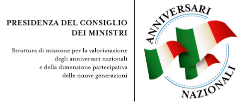Silvestrini, Flavio
Dopo la trincea: Gramsci, "L'Ordine Nuovo" e la rivoluzione italiana
Through the articles written by Antonio Gramsci during the first year and a half of release of "L'Ordine Nuovo", you can see the development lines of what the author has established during the World War I on the historical and political analysis of Italian and European society. These ideas deal directly with Factory Council's doctrine: Gramsci, inspired by the voluntary initia-tives in Turin factories, builds, since the summer of 1919, a revolutionary theory gathered on the role of working-class institutions. The extensive task of the Factory, in a devastated post-war industrial society, forces the political thinker to reshape the traditional functions of the two representative proletarian institutions: Labor Union and Political Party. Only rethinking about how they work, it's possible to lead to success the revolutionary movement of the most aware Italian workers: from Turin industries can arise the future construction of Italian Soviet repub-lic that, after the victory of the Revolution in all countries, will be melted in international communist society. This theory stands in a particular position between socialist thinkers of that period, not only towards Reformists or Unitarians Maximalists, but also towards elements of the Communist faction that breaks up with the PSI during national congress of Livorno (Janu-ary 1921) to create a new revolutionary Party.
| Lingua | ita |
| Nomi |
[author] Silvestrini, Flavio |
| Soggetti |
Rivoluzione
Ordine Nuovo
Revolution
Ordine Nuovo |

